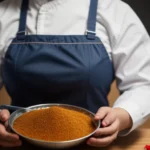When it comes to enjoying a delicious meal, there’s no denying that the perfect wine pairing can take your dining experience to the next level. Spanish cuisine is known for its bold flavors and rich ingredients, making it the perfect match for a variety of wines. From light and crisp whites to full-bodied reds, Spain offers a wide range of wines that can complement any dish. In this article, we will explore the art of pairing Spanish wine with your meal, guiding you through the characteristics of different varietals and suggesting ideal pairings for your next dining experience.
1. Introduction to Spanish Wine
Spain has a long and rich history of winemaking, dating back thousands of years. The country is home to some of the world’s most famous wine regions, including Rioja, Priorat, Ribera del Duero, and Jerez. Spanish wines are characterized by their bold flavors, high acidity, and unique terroir, making them a favorite among wine enthusiasts worldwide.
2. Understanding Spanish Wine Regions
To fully appreciate Spanish wine, it’s important to understand the country’s diverse wine regions. Each region has its own unique climate, soil, and grape varietals, producing wines with distinct flavors and characteristics. Some of the most famous Spanish wine regions include Rioja, which is known for its bold and fruity red wines, and Rias Baixas, which produces crisp and aromatic white wines.
3. Popular Spanish Grape Varietals
Spanish wines are made from a variety of grape varietals, each offering its own unique flavors and aromas. Some of the most popular grape varietals in Spain include Tempranillo, Garnacha, Albariño, and Verdejo. Tempranillo is the most widely planted grape in Spain and is known for producing bold and complex red wines, while Albariño is a crisp and refreshing white varietal that pairs well with seafood dishes.
4. Pairing Spanish Wine with Seafood
One of the best ways to enjoy Spanish wine is to pair it with a delicious seafood dish. The light and crisp flavors of Spanish white wines such as Albariño or Verdejo complement seafood dishes perfectly, enhancing the flavors of the fish without overpowering them. For a classic pairing, try pairing a glass of Albariño with grilled shrimp or seafood paella.
5. Pairing Spanish Wine with Meat
Spanish red wines are a great match for rich and hearty meat dishes, thanks to their bold flavors and high tannins. Varietals such as Tempranillo and Garnacha are perfect for pairing with grilled meats, stews, and roasts, as their robust flavors can stand up to the bold flavors of the meat. For a classic pairing, try serving a glass of Rioja Reserva with a juicy steak or lamb dish.
6. Pairing Spanish Wine with Cheese
Spanish cheese is a great accompaniment to Spanish wine, thanks to its rich flavors and creamy textures. Pairing Spanish red wines such as Tempranillo or Garnacha with soft and creamy cheeses like Manchego or Mahón creates a perfect balance of flavors, with the wine cutting through the richness of the cheese. For a classic pairing, try serving a glass of Ribera del Duero with a selection of Spanish cheeses.
7. Pairing Spanish Wine with Tapas
Tapas are a popular Spanish appetizer that can be enjoyed with a variety of different wines. The small, bite-sized dishes are perfect for sharing with friends and family, making them a great choice for entertaining. Spanish white wines such as Albariño or Verdejo are ideal for pairing with light and fresh tapas dishes, while Spanish red wines such as Tempranillo or Garnacha can be paired with heartier tapas dishes like chorizo or patatas bravas.
8. Tips for Pairing Spanish Wine with Food
When it comes to pairing Spanish wine with food, there are a few key tips to keep in mind. First, consider the intensity of the dish you’re serving – lighter dishes pair best with lighter wines, while richer dishes are best paired with fuller-bodied wines. Secondly, consider the flavors and ingredients of the dish – a wine with similar flavors to the dish will complement it well. Finally, don’t be afraid to experiment with different pairings to find the perfect match for your meal.

9. Spanish Wine Tasting Tips
To fully appreciate Spanish wine, it’s important to take the time to taste and savor each glass. Start by examining the color of the wine, then take a moment to smell the aromas and flavors. Take a small sip and swish the wine around your mouth to fully experience the flavors and textures. Note the acidity, tannins, and finish of the wine, and consider how these elements complement the food you’re pairing it with.
10. Serving Spanish Wine
When serving Spanish wine, it’s important to consider the ideal serving temperature for each varietal. White wines should be served chilled, while red wines should be served at room temperature. Consider decanting a younger red wine to allow it to breathe and open up, enhancing the flavors and aromas. Use proper glassware for serving wine, as the shape of the glass can enhance the tasting experience.
11. Storing Spanish Wine
Proper storage of Spanish wine is essential to maintaining its quality and flavor. Store your wine in a cool, dark place away from sunlight and temperature fluctuations. Keep the wine bottles on their sides to keep the cork moist and prevent oxidation. If you plan to age your wine, consider investing in a wine fridge or cellar to maintain the ideal conditions for long-term storage.
12. Enjoying Spanish Wine and Dine Experiences
Whether you’re enjoying a casual dinner at home or dining out at a Spanish restaurant, pairing the perfect wine with your meal can enhance the dining experience. Consider the flavors and ingredients of the dish you’re serving, as well as the characteristics of the wine, to create a harmonious pairing that elevates your meal. Experiment with different pairings to find your favorite combinations and enjoy the rich flavors of Spanish wine and cuisine.
13. Conclusion
Spanish wine and cuisine offer a rich and diverse culinary experience, with a wide range of flavors and pairings to explore. From light and crisp white wines to bold and robust reds, Spanish wines are the perfect match for a variety of dishes. By understanding the characteristics of different grape varietals and wine regions, you can create the perfect pairing for your next meal. Whether you’re enjoying seafood, meat, cheese, or tapas, there’s a Spanish wine that will complement your dish and elevate your dining experience.
14. Recommended Spanish Wines
There are countless Spanish wines to choose from, but some popular options include:
– Albariño from Rias Baixas
– Tempranillo from Rioja
– Garnacha from Priorat
– Verdejo from Rueda
– Ribera del Duero from Ribera del Duero
15. Explore and Enjoy!
Now that you have a better understanding of Spanish wine and food pairings, it’s time to explore and enjoy the rich flavors of this vibrant cuisine. Whether you’re hosting a dinner party or dining out at a Spanish restaurant, consider the perfect wine pairing for your meal to create a memorable dining experience. Cheers to Spanish wine and dine!
FAQs about “Spanish Wine and Dine: Pairing the Perfect Vino with Your Meal”
- What makes “Spanish Wine and Dine: Pairing the Perfect Vino with Your Meal” an essential read for wine and food enthusiasts? This book offers a comprehensive guide to Spanish wine pairing, providing insights into the diverse range of Spanish wines and how to perfectly match them with various dishes for an unforgettable dining experience.
- Which aspects of Spanish wine and food pairing are covered in this guide? “Spanish Wine and Dine” covers a wide range of topics related to Spanish wine and food pairing, including different wine regions, grape varieties, wine styles, and practical tips for pairing Spanish wines with different types of cuisine.
- How does this book celebrate the rich wine-making heritage of Spain? This book celebrates the rich wine-making heritage of Spain by exploring its diverse wine regions, traditional winemaking techniques, and the unique characteristics of Spanish grape varieties, providing readers with a deeper appreciation for Spanish wine culture.
- Are specific Spanish wines and food pairing suggestions highlighted in this book? Yes, this book features specific Spanish wines like Rioja, Tempranillo, Albariño, and Cava, along with food pairing suggestions for tapas, paella, seafood, cured meats, and other Spanish dishes, allowing readers to create perfectly balanced wine and food combinations.
- Can readers expect to find practical advice and recommendations for selecting Spanish wines and planning wine-centric meals from this book? Absolutely! “Spanish Wine and Dine” provides practical advice, tasting notes, and recommendations for selecting Spanish wines, as well as tips for planning wine-centric meals and hosting wine pairing events, allowing readers to elevate their dining experiences with the perfect Spanish vino.
Advantages:
- Appeal to Wine Enthusiasts: The title “Spanish Wine and Dine: Pairing the Perfect Vino with Your Meal” appeals to wine enthusiasts, indicating a focus on Spanish wine and its pairing with food, which can attract readers interested in learning more about wine.
- Culinary Exploration: By emphasizing wine pairing with meals, the title encourages readers to explore Spanish cuisine and wine culture, fostering a deeper understanding of how different flavors complement each other and enhancing the dining experience.
- Cultural Representation: The title highlights Spanish wine, showcasing an important aspect of Spanish gastronomy and culture, and providing readers with insights into the diversity and quality of Spanish wines available.
- Practical Guidance: As a guide to wine pairing, the title serves a practical purpose for readers interested in enhancing their dining experiences, providing them with recommendations and tips for selecting the right Spanish wine to complement their meals.
- Inspiration for Dining: The title may inspire readers to try new Spanish wines and explore Spanish cuisine, encouraging them to experiment with different wine and food pairings and fostering a greater appreciation for Spanish gastronomy.
Disadvantages:
- Narrow Focus: While the title emphasizes Spanish wine, it may overlook other important aspects of Spanish cuisine or culinary traditions, potentially limiting the depth of the discussion and excluding certain elements of Spanish gastronomy.
- Audience Limitation: The title may primarily appeal to readers with a specific interest in wine pairing or Spanish cuisine, potentially excluding those who prefer other types of cuisine or are seeking a broader overview of global culinary traditions.
- Accessibility Issues: Some Spanish wines may be difficult to find outside of Spain or specialty wine shops, limiting the practicality of experiencing authentic Spanish wine pairings for readers in certain regions.
- Cultural Misrepresentation: Focusing solely on Spanish wine and dining may oversimplify the complexity of Spanish gastronomy and overlook other important cultural and culinary aspects of Spanish cuisine.
- Subjectivity: The selection of “the perfect vino” for pairing with meals may be subjective and dependent on individual tastes, preferences, and cultural backgrounds, leading to differing opinions on what constitutes the ideal wine pairing.
















